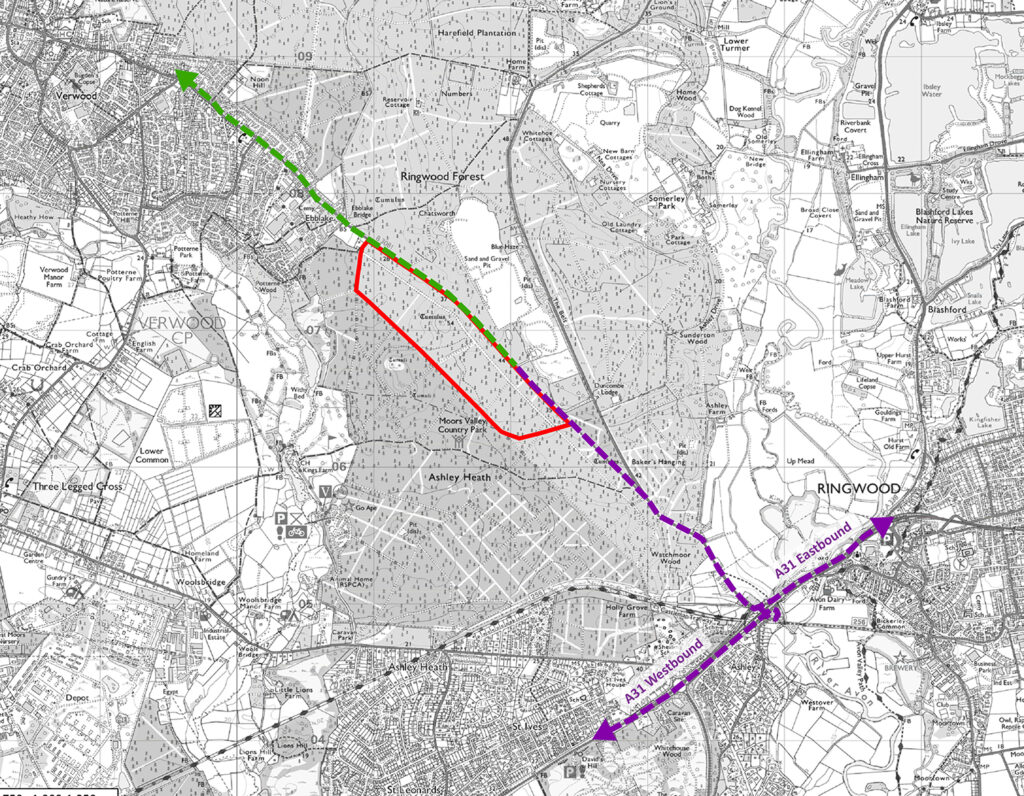proposed site operations
With the site investigations largely complete, we started to develop our scheme. Our principle design considerations include:
- protection of groundwater resources
- protection of Ebblake Bog SSSI located to the north west
- not creating large open water bodies that pose a bird strike risk to Bournemouth Airport
- safeguarding ecology and protected species
- maintaining ongoing access and use
- minimising visual and amenity impact
- highways safety
- geology
Assessing these constraints results in the proposals:
- limiting extraction to above the highest groundwater level to protect groundwater quality and flows to Ebblake Bog SSSI
- reducing the potential sand extraction area to 35 hectares from a site of 70 hectares to provide ecological protection measures and buffer zones – as well as maintaining ongoing access and use
- phased so that only one phase is being extracted at any one time, with the preceding phase being restored to a mix of heathland, woodland and water features. Other areas remain in existing uses or have been restored
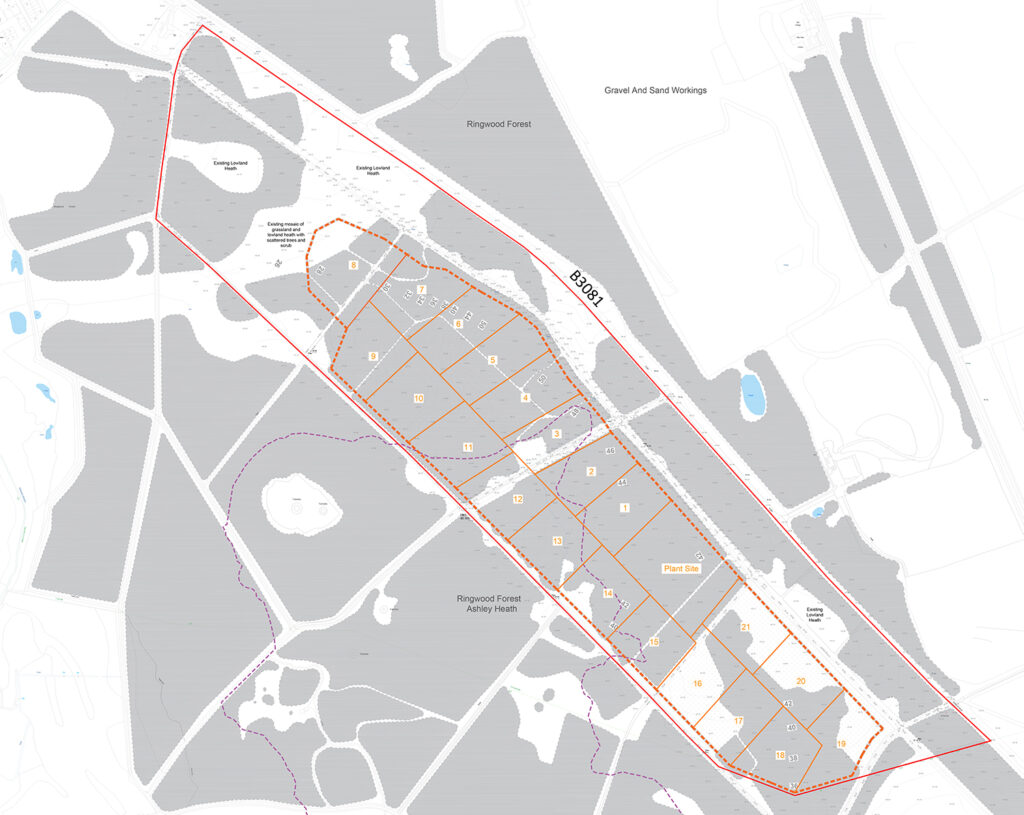
The site is expected to provide 4.5 million tonnes of sand worked over 22-25 years as a series of 22 phases.
Land not immediately required would remain in forestry use until needed for extraction – with continued informal access.
Only one phase would be worked at any time – each phase size is around 1.6 hectares, the size of 2 football pitches. Each phase would last 10-15 months.
Progressive extraction is undertaken on a phase-by-phase basis, with each phase worked and then restored the following year.
The sand would be transported by conveyor to the processing area.
The direction of working is anticlockwise starting next to the processing site moving north along the eastern side and then south on the western side with a central conveyor.
Working then progresses into the southern section of the site and the conveyor is moved into this area.
Restoration would be back to a lower level with a mix of forestry and heathland with some water areas.
The restoration aim is to increase biodiversity and a long-term management plan would make sure that the site remains of biodiversity interest.
A new site access would be provided on the B3081, Ringwood Road opposite the Somerley household waste recycling site. This location was chosen due to the alignment of Ringwood Road as this area provides the best visibility along the road and the opportunity to improve access to the Somerley household recycling site.
A number of options were considered – a conventional junction, traffic lights and a roundabout.
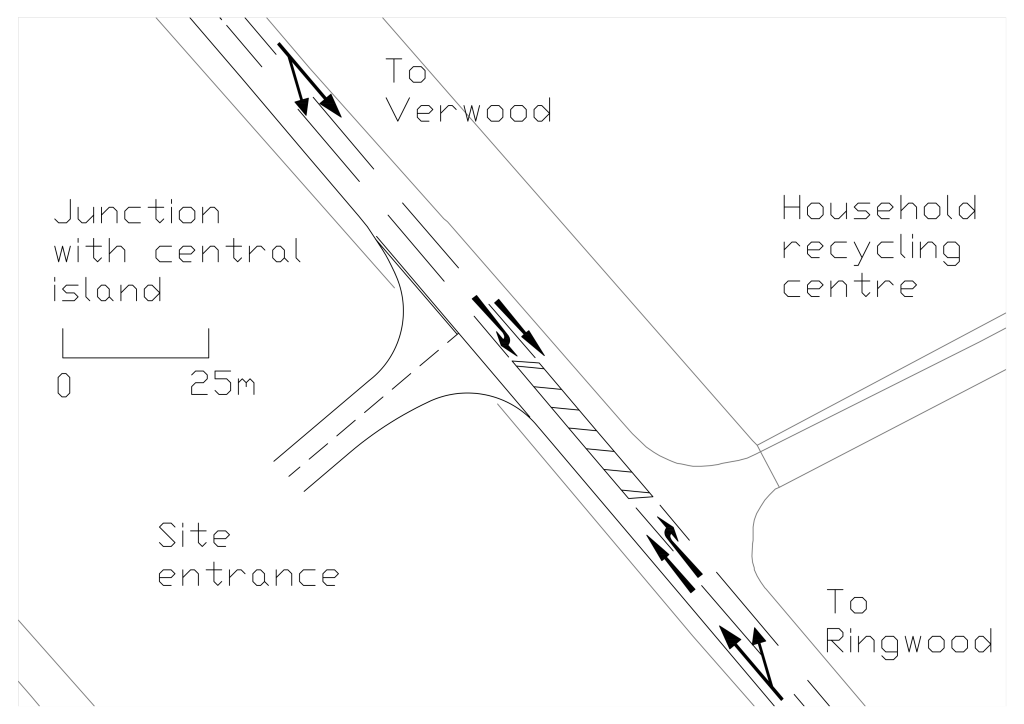
The junction option would require road widening to the west to create an additional northbound lane with the current lane becoming a central white lined island so that northbound vehicles can wait and turn into the recycling site and southbound can wait to turn into the quarry site. Vehicles leaving the quarry site southbound would cross the island.
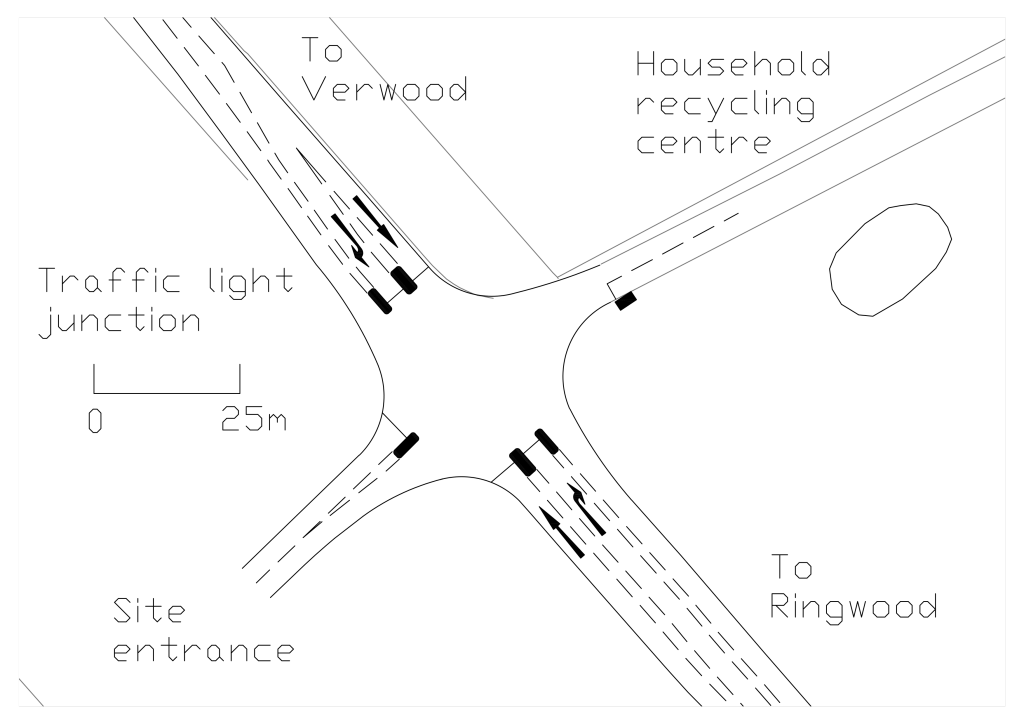
The traffic light option would require road widening on both sides of the road to create a new central lane. Northbound vehicles would wait in the new lane to turn right into the recycling site and southbound would wait in the new lane to turn right into the quarry site. All four roads would be controlled by lights that would be timed to give priority to traffic on the B3081.
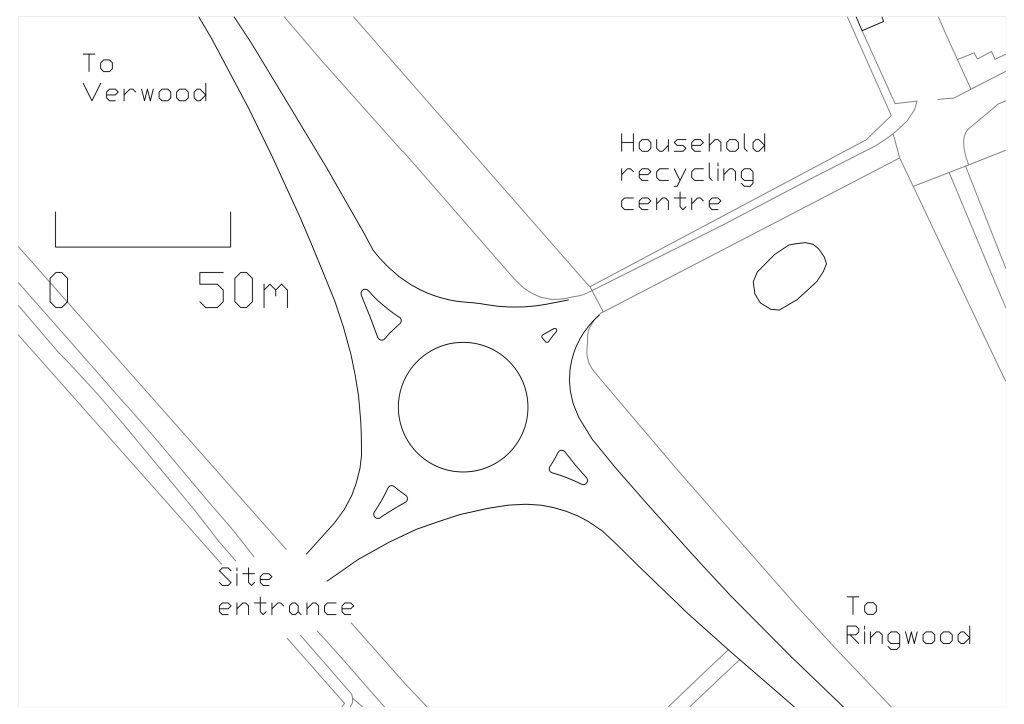
The last option would create a large diameter roundabout with arms created into the recycling and quarry sites. This is constructed next to the road and is then joined into the existing road.
